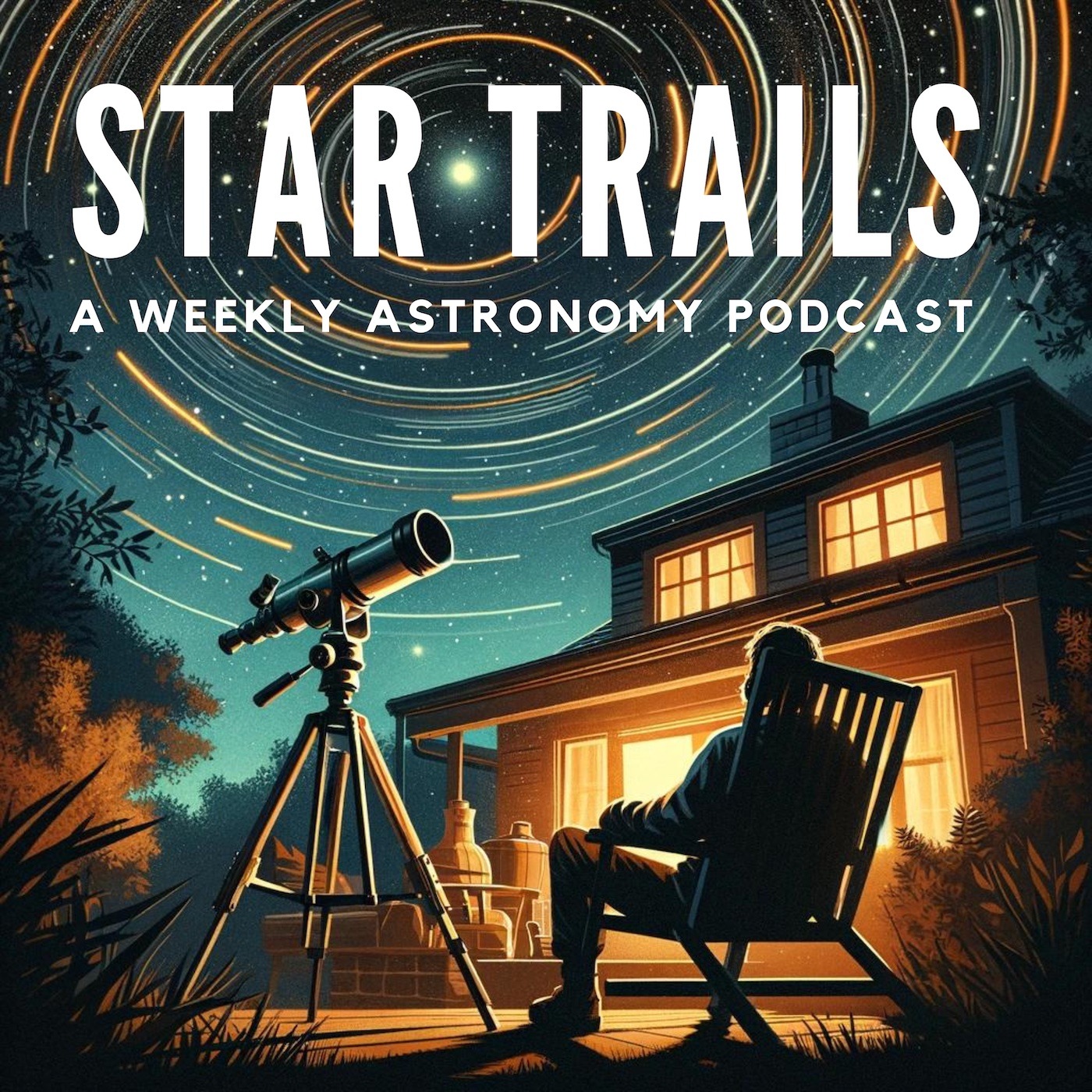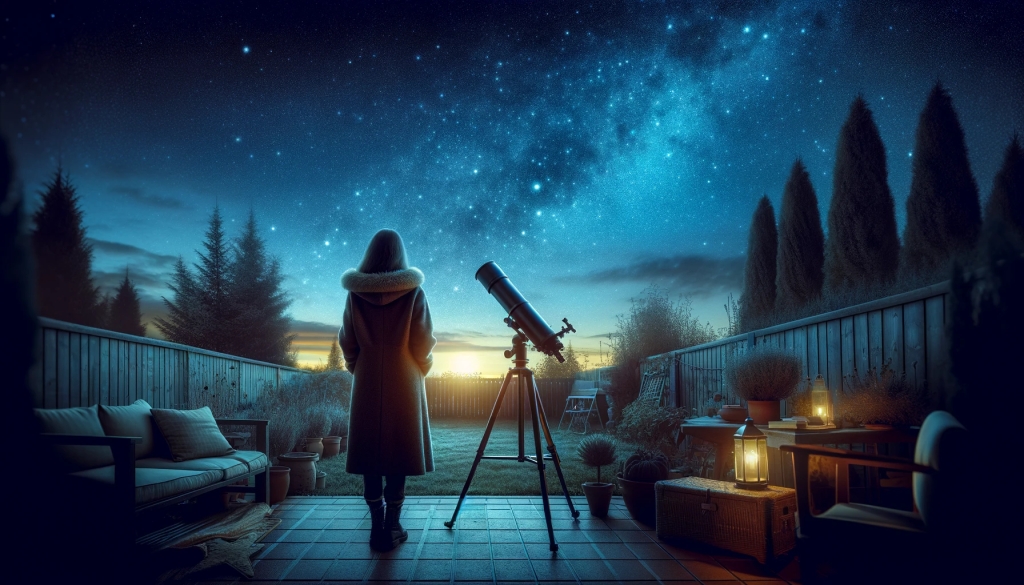
Neptune's Secrets and May's Stellar Highlights – Star Trails: A Weekly Astronomy Podcast
EP18
Join us as we journey through the cosmos and uncover the celestial highlights for the week of May 26th, 2024. We’ll dive into the Moon’s phases, the visibility of planets like Saturn and Mars, and explore stunning deep-sky objects such as the Sombrero Galaxy, Whirlpool Galaxy, and the Owl Nebula.
Plus, don’t miss our special segment on Voyager 2’s historic encounter with Neptune on June 5, 1989, where we celebrate the spacecraft’s remarkable contributions to our understanding of the outer planets.
Transcript
Hey there, star enthusiasts! Welcome back to another exciting episode of Star Trails, your friendly guide to the night sky. I’m Drew, your amateur astronomer and stargazing buddy. This week, we’re diving into the celestial wonders awaiting us from May 26th to June 1st, 2024. Grab your telescopes, binoculars, or just your eyes, and let’s explore the cosmos together!
First up, let’s talk about our faithful companion, the Moon. This week, we’ll be experiencing a last quarter moon on May 31st. Early in the week, you’ll notice the waning gibbous phase, which is perfect for observing the Moon’s surface features like craters and maria along the terminator line where shadows cast the most dramatic details.
Now, onto the planets, Like last week, you’ll need to be an early riser to catch them, as they continue their march towards a planetary parade on June 3.
Jupiter is too close to the Sun to be visible this week, but keep an eye out as it will become more visible in the early morning sky in the coming months.
Saturn is a highlight of the early morning sky. It rises around 2-3 hours before sunrise and is located in the constellation Aquarius. Keep in mind its rings are in a unique edge-on orientation towards the Earth, so they may be harder to see. This phenomenon is known as a ring-plane crossing, and happens every 14 to 15 years. Get up early on the morning of May 31st, when Saturn will be near the waning crescent Moon, providing a beautiful conjunction.
Mars is also visible in the early morning hours in the constellation Pisces. Although it’s relatively dim this month, a telescope will still reveal its reddish surface. Mars rises about 2 hours before the Sun by the end of the month.
You may be able to spot Mercury low on the eastern horizon in the morning twilight. Look for it about 30-45 minutes before sunrise. Venus is not visible this week as it is too close to the Sun, but it will reappear in the evening sky around early August.
Uranus and Neptune present some intriguing, albeit challenging, viewing opportunities for early morning stargazers. Uranus will be positioned in the constellation Aries, rising just before dawn. However, it will be very difficult to observe, with its visibility further hampered by the morning light. It’s barely visible to the naked eye under optimal dark sky conditions, but more reliably spotted using binoculars or a small telescope. Notably, Uranus will have a conjunction with Mercury on May 31, but this event will also be challenging to see owing to the brightness of the morning sky.
Neptune, on the other hand, is in the constellation Aquarius and will rise several hours before dawn. Neptune is much fainter than Uranus and will require the use of binoculars or a telescope for observation. The best time to view Neptune is in the early hours before sunrise when it is higher in the sky but before the light of dawn makes it too faint to see.
Despite these challenges, catching a glimpse of Neptune can be rewarding, providing a sense of accomplishment in tracking one of the most distant planets visible from Earth.
And now, let’s explore some of the constellations visible this week and delve into the lore behind them:
Hercules, the Strongman, is currently well-positioned in the evening sky. Hercules is often depicted kneeling, and he’s best known for his Twelve Labors in Greek mythology. One of the most fascinating objects within Hercules is the Great Hercules Cluster (M13), a stunning globular cluster.
Corona Borealis, the Northern Crown, is a small but distinctive constellation located between Boötes and Hercules. In Greek mythology, it represents the crown given to the princess Ariadne by the god Dionysus. The crown was set in the sky to commemorate their love.
Scorpius, the Scorpion rises in the southeastern sky, and is one of the most recognizable constellations of the summer. In Greek mythology, Scorpius was sent by the goddess Artemis to kill the hunter Orion. The two constellations are placed on opposite sides of the sky to keep them apart.
Of course, some familiar favorites of spring are still decorating the sky, including our old friends Virgo, Leo, Bootes and Ursa Major – constellations we’ve mentioned repeatedly in prior episodes.
Now, let’s turn our gaze to some deep-sky objects that are perfect for this time of year:
The Sombrero Galaxy (M104) in the constellation Virgo is a stunning spiral galaxy seen almost edge-on. Its bright nucleus and large central area, surrounded by a dark dust lane, give it the appearance of a sombrero hat. It’s a fantastic target for both small and large telescopes.
The Whirlpool Galaxy (M51), located near the handle of the Big Dipper in the constellation Canes Venatici, is an interacting grand-design spiral galaxy. Through a telescope, you can see its well-defined spiral arms and its companion galaxy, NGC 5195, which appears to be tugging at one of M51’s arms.
The Owl Nebula (M97) in the constellation Ursa Major is one of the more complex and fascinating planetary nebulae in the sky. It appears as a faint, round glow through a telescope, with two darker regions resembling an owl’s eyes. It’s a rewarding challenge for amateur astronomers.
As we move into June, we’re celebrating a monumental event in space exploration that occurred on June 5, 1989. It’s the anniversary of Voyager 2’s closest approach to Neptune, the first and only spacecraft to have visited the distant blue planet. Let’s take a quick look back at what Voyager revealed.
Voyager 2 was launched by NASA on August 20, 1977, just 16 days before its twin, Voyager 1. The primary mission was to study the outer planets – Jupiter, Saturn, Uranus, and Neptune – a mission that has far exceeded its original scope. Unlike Voyager 1, which took a more direct path towards interstellar space, Voyager 2’s trajectory was carefully planned to include flybys of all four gas giants, providing a grand tour of our solar system’s outermost planets.
On June 5, 1989, Voyager 2 made its closest approach to Neptune, coming within 3,000 miles of the planet’s north pole. This historic flyby provided humanity with its first detailed images and data of Neptune and its largest moon, Triton. The spacecraft’s instruments revealed stunning features, including the Great Dark Spot, a storm system similar to Jupiter’s Great Red Spot, and high-speed winds reaching up to 1,500 miles per hour.
Voyager found that Triton, Neptune’s largest moon, has geysers erupting nitrogen gas, indicating active geological processes. Its surface was found to be covered with a mixture of water ice and frozen nitrogen, making it one of the coldest bodies in the solar system.
Voyager 2 also provided the first clear images of Neptune’s ring system, which is composed of dark, narrow rings and dusty arcs.
Voyager 2’s encounter with Neptune marked the end of its grand tour of the outer planets, but it also opened a new chapter in our understanding of the solar system. The data collected has been invaluable to scientists, helping to refine models of planetary atmospheres and geologic activity on icy moons.
Voyager 2 is now more than 11 billion miles from Earth and it continues its journey through interstellar space, sending back data about the environment beyond our solar system via NASA’s Deep Space Network. This information helps scientists understand more about the heliosphere and the nature of space itself.
That’s going to do it for this week’s celestial highlights. Before I close the episode, I’d like to point you to our new weekly e-mail newsletter on Substack, where you can receive night sky reports and astronomy news that we don’t always mention on the podcast. It’s completely free, and a great supplement to the podcast. Last week I posted an article there about contributions of amateur astronomers, and it contains many links to resources you may find helpful as a stargazer.
We’re also on Mastodon @star_trails and we’d love to hear from you. I’ll include links to both services in the show notes. Also, remember our website, startrails.show, where you can find all our episodes, including transcripts.
Keep looking up, and I’ll see you next time on Star Trails! Clear skies!


Leave a comment